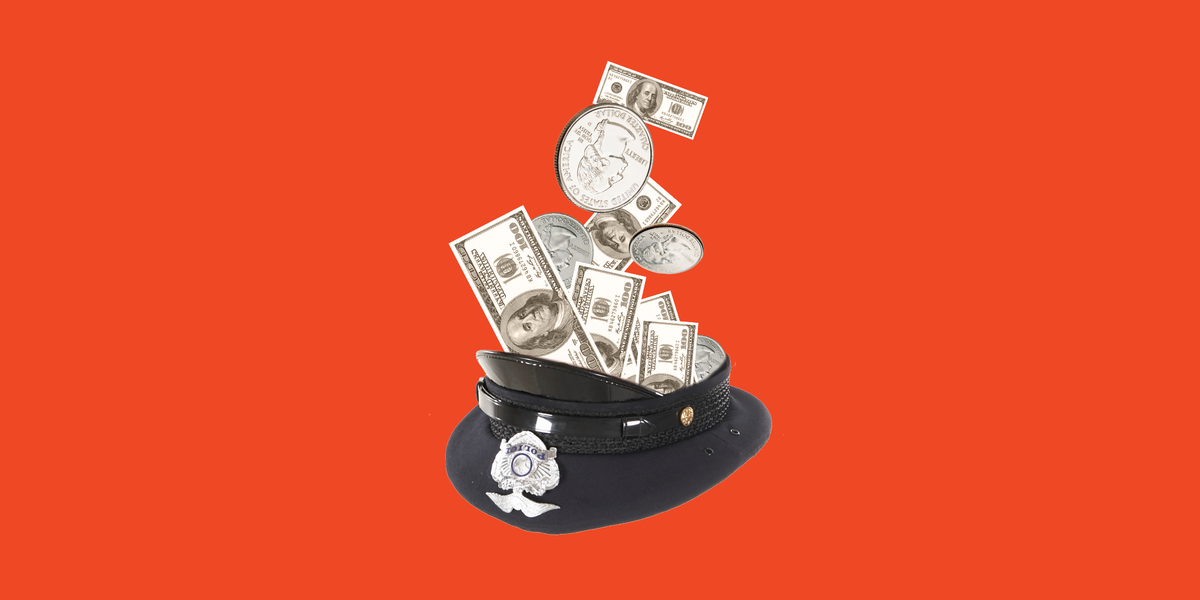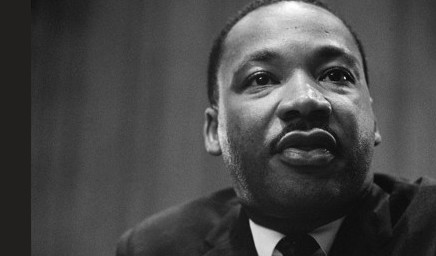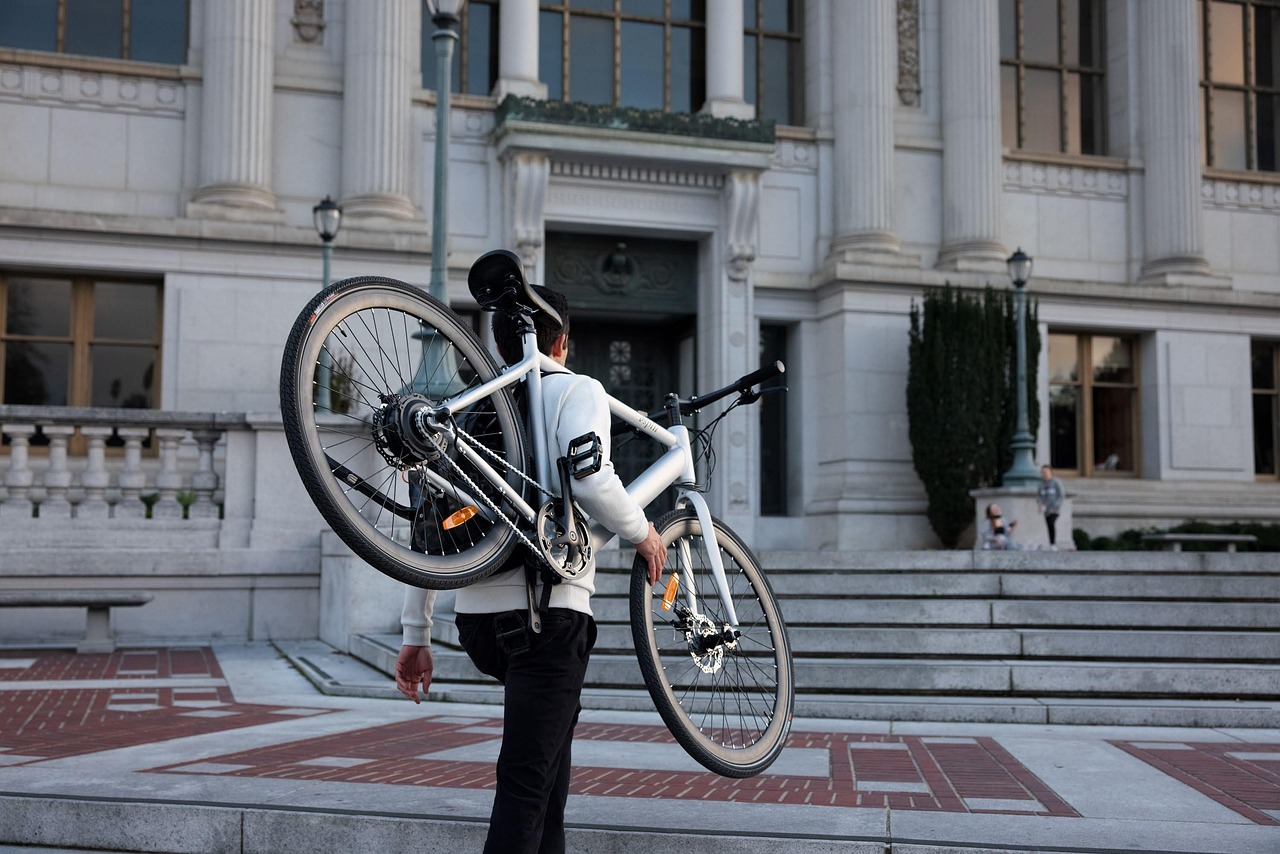During the protests that are occurring all across the country in response of George Floyd’s murder, the police have displayed violence, aggression, and brutality towards mostly peaceful activists exercising their rights.
Police have driven through crowds, have fired rubber bullets at peaceful journalists and crowds, and have attacked people who are not even protesting. They have destroyed medical tents, arrested medics, and trapped people before curfew, making arrests inevitable. They have pepper sprayed State senators and innocent people, have fired rubber bullets at crowds, and have independently instigated violence. Videos of protestors with blood streaming down their faces are now the norm.
The police’s violence during a protest against police brutality merely proves the point that protestors are trying to make and that many Black and brown communities have always known: The police are a violent, confrontational, largely untrained, and highly armed battalion of people that often encourage and instigate violence.
A History of Violence
It has, in fact, always been this way.
Modern policing is a relatively new institution that was developed in the 1830s and 40s, with the first police force established in Boston. These very early police forces initially focused on European immigrants but later began to heavily police African Americans fleeing the Jim Crow South. “There was a lot of one-on-one conflict between police and citizens and a lot of it was initiated by the police,” writes sociologist Malcolm Holmes.
In the South, slave patrols were primary forms of policing, and after slavery was abolished these patrols continued to work to maintain preexisting structures of power. “During Reconstruction, many local sheriffs functioned in a way analogous to the earlier slave patrols, enforcing segregation and the disenfranchisement of freed slaves,” writes Olivia B. Waxman for Time.
Since those early days of policing, the definition of who and what the police are supposed to defend has been determined by those in power. During the late 19th century and early 20th century, police were arms of the powerful, used to harass opposing political parties, to torment union members, and persecute people drinking in taverns, among other uses. This only grew worse during Prohibition.
Over the past century, policing has continued to work as a tool to maintain existing structures of power while criminalizing the poor and non-white. There has been pushback: Police brutality was a main catalyst for the Civil Rights movement in the 1960s, as was the fact that police enforced racist tactics such as redlining, which kept Black communities in positions of subjugation. But the police remain a beloved institution in white society. Nixon’s War on Drugs only intensified this divide, resulting in the criminalization and incarceration of thousands and thousands of Black people. Today, America has 25% of the world’s prison population while being only 5% of the world’s population.
So what is there to be done about all this? What can be done about America’s major, centuries-old problem with police and its related systems of mass incarceration?
The answer is tied up with the goals of the protests and the Black Lives Matter movement. There isn’t one concise answer, but one thing is clear: Things have to change.
Police Don’t Make Us Safer
Many people—often white—think of the police and prisons as institutions that keep us safe, but statistically, this is simply not the case.
In 2011, NYC saw nearly 700,000 incidents of stop-and-frisk. When “a radical scaling back of stop-and-frisk,” occurred, “Critics predicted a disastrous return to, depending on one’s age and experience, the 1970s or the 1990s,” writes Joe Sexton for ProPublica. But “the disaster never happened. Instead, what many scholars and police officials thought nearly unthinkable — further reductions in crime after two decades of plummeting numbers—did.”
Furthermore, incarceration—a natural consequence of increased aggressive policing—does very little to reduce crime.”There is a very weak relationship between higher incarceration rates and lower crime rates,” writes the Vera Project. “Since 2000, however, the increased use of incarceration accounted for nearly zero percent of the overall reduction in crime.”
So if incarceration and policing don’t reduce crime, what does?
“Research has shown that the aging population, increased wages, increased employment, increased graduation rates, increased consumer confidence, increased law enforcement personnel, and changes in policing strategies were associated with lower crime rates and, collectively, explain more of the overall reduction in crime rates than does incarceration,” the Vera Project report continues. “Although it may seem counterintuitive, research has shown that incarceration may increase crime.”
Still, the police and America’s prisons receive tremendous high levels of funding—the NYPD received 6 billion dollars in funding this past year—and meanwhile police keep killing and imprisoning Black and brown communities.
“The punitive impulse [the police] embody saturates nearly every facet of American life,” where officers “take the place of social workers and emergency medical personnel and welfare caseworkers, and when they kill, we let them replace judges and juries, too,” writes Sarah Jones inNew York Magazine.
“At all levels of government, the country spends roughly double on police, prisons, and courts what it spends on food stamps, welfare, and income supplements,” writes Annie Lowrey for The Atlantic.
During the onset of COVID-19, “the decision that mayors in even liberal cities like Los Angeles and New York were making as of early May was to propose deep cuts in essentially every major category except the police,” writes Matthew Yglesias for Vox.
As has always been the case, policing and incarceration are often used to make money for the powerful, upholding structures of power. That’s why they’ve avoided the cutting room.
“A Department of Justice investigation found that in Ferguson, Missouri, the town used the police and the courts as a kind of fundraising office, plugging budget holes with ginned-up traffic tickets and housing-code violations and charges for missed court dates,” Lowrey continues. “America badly needs to rethink its priorities for the whole criminal-justice system.”
Alternatives to Aggressive Policing
How does one address aggressive policing? What strategies work? “The problem America faces is not figuring out what to do,” argue Seth W. Stoughton, Jeffrey J. Noble, and Geoffrey P. Alpert for The Atlantic. “As an industry, American policing knows how to create systems that prevent, identify, and address abuses of power. It knows how to increase transparency. It knows how to provide police services in a constitutionally lawful and morally upright way. And across the country, most officers are well intentioned, receive good training, and work at agencies that have good policies on the books. But knowledge and good intentions are not nearly sufficient… What we desperately need, but have so far lacked, is political will.”
Therefore it’s important to spread information about the logistics of alternatives to policing. Stoughton, Noble, and Alpert argue that in order to reform policing, we need to end qualified immunity (which prevents police from being sued unless their crimes were labeled unconstitutional at the time they committed them). Congress could also encourage better and clearer data about police work and invest more in training.
According to a document from the organization Campaign Zero, here are five additional strategies that could help reform police:
- End Broken Windows Policing
“Only 5% of all arrests made in America are for violent crimes. Meanwhile, the vast majority of arrests are for low level offenses that pose no threat to public safety. Police departments should decriminalize or de-prioritize enforcement of these issues,” the document reads. Armed police who are trained to react violently but have no training in de-escalation strategies should not be tasked with dealing with nonviolent crime. Homelessness, mental health crises, and petty crime should initially be addressed by mental health workers, social workers, community intervention workers, or a task force specifically trained to deal with these issues, not cops as we know them today. Police funds should be redistributed towards community intervention initiatives and similar task forces.
2. End For-Profit Policing
Police should not rely on tickets or fines issued in order to make money. Arrests should not be sources of profit. The Supreme Court actually ruled to place limitations on for-profit policing in 2019, but these measures need to be enacted in every state.
3. Limit Use of Force
“The research is clear: police departments with more restrictive use of force policies – like banning chokeholds and requiring de-escalation – are substantially less likely to kill people,” reads the document. An Early Intervention System that identifies officers who tend to use excessive force should be established.
4. Demilitarization
Cities and countries should not be allowed to use federal funds to purchase military equipment, and city council approval should be required before police can purchase this type of equipment.
5. Body Cameras
“Research shows that body cameras do not prevent police violence from happening, but they do increase the chances that officers will be disciplined or even prosecuted for these incidents.”
6. Independent Investigations
“Only 1% of all killings by police lead to an officer being charged with a crime,” the document reads. Independent investigations of officers charged with misconduct must be required.
7. Training
“The average police recruit spends 58 hours learning how to shoot and only 8 hours learning how to de-escalate.” Police should receive de-escalation training.
8. Fair Police Union Contracts
Police union contracts are major impediments that make it difficult for police to be fired. Barriers to accountability should be removed. According to checkthepolice.org, police union contracts can block accountability by “disqualifying misconduct complaints, preventing police officers from being interrogated immediately, giving officers access to information that civilians do not get, requiring cities to pay for costs related to police misconduct, preventing information on past misconduct, and limiting disciplinary consequences.”
Another Choice: Defund Police
Despite the purported efficacy of these tactics, people have been attempting to institute these police reform-based practices for years. Funds have been poured into police training, body cameras have been installed, and yet… These things have not worked, and people are still losing their lives to police violence.
“There is no evidence that better police training programs or “implicit bias” training changes police behavior,” writes Samuel Sinyangwe. “More restrictive state and local policies governing police use of force are associated with significantly lower rates of police shootings/killings by police. This is backed by 30+ years of research,” Sinyangwe adds.
The only solution to reducing police violence might be a more radical tactic: Defund the police—and channel that money into education, community development, social work, and other tactics that stop crime before it starts instead of tamping it out through violence or making it up to reach a quota.
There is no precise consensus on what defunding the police will involve, though people have plenty of ideas. “I think we need to consider a divest/invest model,” said Queens Senator Julia Salazar as she made her argument for defunding the police. “When we look at their resources, and how they’re deploying them violently and recklessly, it makes the case even stronger for reducing their budget, and then using those funds for social services, and specifically for things that New Yorkers would want the police to do but the police are not currently doing: harm reduction, community-based public safety.”
When discussions about defunding and curtailing the power of the police come up, the main question that arises is: Who will uphold our laws?
It’s important to remember that people who advocate for defunding the police are not advocating for a lawless land. Instead, they’re asking for the massive amount of funds that the police receive to be redistributed to investments in people-powered organizations that keep us safe.
Should Police Be Abolished?
Beyond defunding is the ultimate goal of police abolition, which many abolitionists argue is the only way to stop police violence.
“Our police is not working—we need to replace it with something new. It’s more than a repair. We need something new,” writes Jessica Disu in the Chicago Reader. “We need to come up with community solutions for transformative justice.”
The concept of police abolition is connected to the prison abolition movement started by Black abolitionists in the 70s. As the existence of the prison industrial complex—a complicated arrangement that allows the U.S. government and corporations to profit off of prison labor—became solidified in the early 2000s, so did the idea of prison abolition.
“[The work of maintaining incarceration], which used to be the primary province of government, is now also performed by private corporations, whose links to government in the field of what is euphemistically called ‘corrections’ resonate dangerously with the military industrial complex,” wrote Angela Davis in an article in the magazine Colorlines.
Prison and police abolition doesn’t mean suddenly abolishing police and prisons. Instead, it means redesigning the entire punitive system, and developing correctional systems based in communities, in systemic change, and justice. “For me prison abolition is two things: It’s the complete and utter dismantling of prison and policing and surveillance as they currently exist within our culture. And it’s also the building up of new ways of intersecting and new ways of relating with each other,” says Mariame Kaba, a major prison abolitionist advocate.
When many people hear about abolishing police, they immediately begin to worry: Who would I call if my house is robbed? But it’s important to remember that police are not a safe option in the first place for many people, particularly Black people, and so many are left without any help at all in the case of criminal activity. It’s also important to remember that this kind of violence is often connected to poverty or other forms of suffering that could be eliminated by investments in communities, healthcare and the like.
Seattle city council candidate Shaun Scott put it this way: America must “[disinvest] from the police state” and “build towards a world where nobody is criminalized for being poor.” He went on to criticize so-called officers” for their “deep and entrenched institutional ties to racism” that created an “apparatus of overaggressive and racist policing that has emerged to steer many black and brown bodies back into, in essence, a form of slavery.”
Another police abolitionist, Kristen Harris-Taley, asks: “How do you reform an institution that from its inception was made to control, maim, condemn, and kill people? Reform it back to what?”
“Oppressed people must give up the systems that harm them,” writes Derecka Purnell for the Boston Review. “Police are not public, nor good. Departments arrest for profit and sell vulnerable people to jails and prisons to fill beds. Cities incentivize and reward police officers for maximizing their ticket writing and traffic stops. On college campuses, cops make drugs disappear; on the streets, cops make alleged dealers disappear. Police officers are prison–industrial complex foot soldiers, and poor people are its targets. Disadvantaged communities should not ask for law enforcement to ensure safety any more than someone should ask for poisoned water to quench thirst.”
So while police abolition may sound extreme, it’s worth deep study at the very least for anyone invested in racial justice. (Check out this syllabus on police abolition to learn more).
Restorative Justice: What Would a Post-Police Future Look Like?
If police were abolished, what would take their place?
The answers are surprisingly logical. “Police abolition work is not about defunding every department instantly; it’s about a gradual process of strategically reallocating resources, funding, and responsibility away from police and toward community-based models of safety, support, and prevention,” writes MPD 150, a police abolition organization. “The people who respond to crises in our community should be the people who are best equipped to deal with those crises.”
“Where’s the community resource center? Where are the supports for families, so that maybe they can fix their problems? Where are the outlets for women so that they can live independently, to get away from an abuser?” asks Alex Vitale, the author of The End of Policing.
Instead of aggressive policing, prison and police abolition advocates point to community organizations, better mental healthcare, an end to solitary confinement, and a “restorative justice” approach as viable alternatives.
In a restorative justice system, the victim and perpetrator’s perspectives are both examined and discussed. “Typically, a facilitator meets separately with the accused and the victim, and if both are willing to meet face to face without animosity and the offender is deemed willing and able to complete restitution, then the case shifts out of the adversarial legal system and into a parallel restorative-justice process,” writes Mark Engler for Morningside Center. “All parties — the offender, victim, facilitator and law enforcement — come together in a forum sometimes called a restorative-community conference. Each person speaks, one at a time and without interruption, about the crime and its effects, and the participants come to a consensus about how to repair the harm done.” This may sound like a lot of work, but remember how much paperwork and processing one arrest requires.
“Restorative practices focus on repairing the harm that has been done, rather than simply punishing someone who has committed an offense by locking them up,” writes Vanessa Hernandez in an ACLU op-ed. Restorative practices in the criminal justice system, including peacemaking circles, mediation, and family conferencing, bring people who have committed crimes together with victims of crime, their families, and other community members to identify and address the damage caused by crime.” This is also particularly effective in schools and juvenile detention centers. When exposed to restorative justice practices, “Incarcerated people at San Quentin reported to the delegation that the restorative process was highly transformative in that it allowed them to be forgiven by those who they had harmed and cultivated in them an ability to forgive themselves,” writes Peter Kletsan.
Of course, restorative justice practices alone are not enough to heal America’s broken criminal justice system. That will take a lot more—a lot of protests, a lot of political action, a lot of coming together. Perhaps it will take a revolution.
As we wait, we can all learn ways to mitigate the amount of harm that police cause. We can research alternatives to calling 911; we can invest in community infrastructure; we can study de-escalation and first-aid; we can join prison and police abolition groups; white people can learn how to put their bodies in between Black people and the police; and we can continue to learn and make our own decisions about the policing systems that our tax dollars are paying for.
- COVID-19 Marketing Emails Are the Newest Form of Art – Popdust ›
- Why You Should Reconsider Posting A Black Square On Social … ›
- Guardian Angels Face NYC Riots: A Better Model of Policing … ›
- Donald Trump’s “Shooting” Tweet Is Not Okay – Popdust ›
- COVID-19 & Police Brutality in Black America – Liberty Project ›





